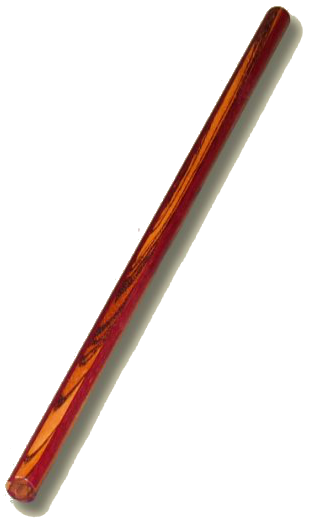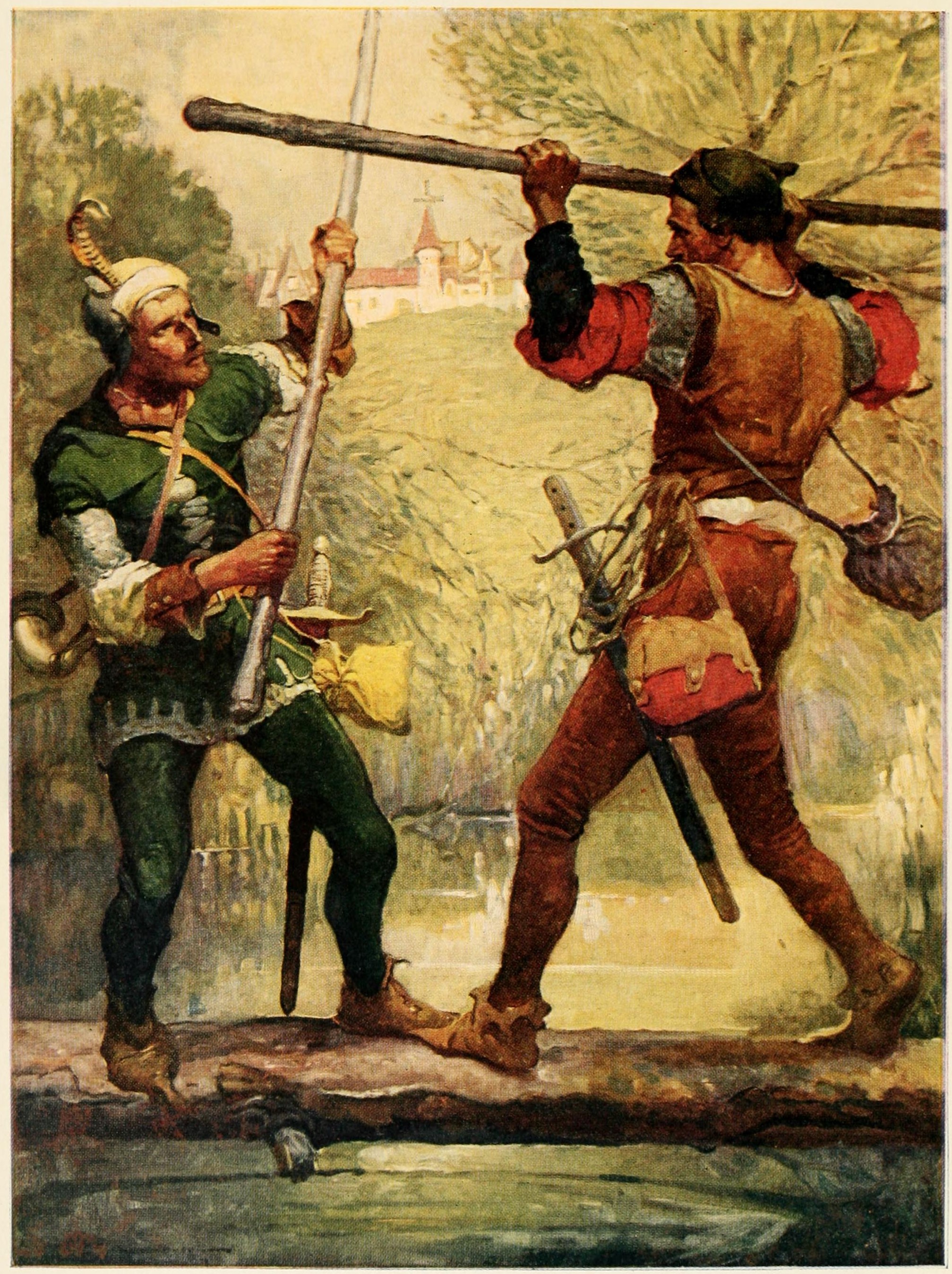|
Tanbō
The is a short staff weapon used in Okinawa and feudal Japan. Today the is used by various martial arts schools. Description The is a short hardwood staff that is used in the same way as the approximately hanbō. Short staffs smaller than can be called . There is no official length for a as different ''ryū'' (martial arts schools) use of various lengths. can be individually sized using variations of the "hand to elbow" method. Usage The is used in several martial arts including: jujutsu, aikido, kobudo, hapkido, yoseikan budo, Cuong Nhu. are swung using the elbow and shoulder, or manipulated with the wrist. Many of the motions are similar to sword strokes. The can be deadly in skilled hands. The main use is to attack the outer edges of the human bones with speed and accuracy. Applying this concept, virtually every part of the target can be hit with this weapon. To use this weapon effectively, the opponent may be imagined as a 2-dimensional object standing i ... [...More Info...] [...Related Items...] OR: [Wikipedia] [Google] [Baidu] |
Baston (weapon)
The baston (Spanish and Filipino language, Filipino for "Stick-fighting, cane") is one of the primary weapons of Arnis and Filipino martial arts. It is also known as ''yantok'', ''olisi'', ''palo'', ''pamalo'', ''garrote'', ''caña'', cane, ''arnis'' stick, ''eskrima'' stick or simply, stick. History The usage of bastons for historical fencing (''esgrima'' in Spanish) has been recorded at least as far back as 400 years ago. In Fr. Pedro de San Buenaventura's "''Vocabulario de Tagalog language, la Lengua Tagala''" published in 1613 in Pila, Laguna, it states: ''Esgrimir: Calis pp: dos con palos o canas, nagcacalis.'' (Fencing: Kalis pp. two with sticks or canes, nagkakalis) Another instance where it is recorded is in "''Vocabulario de Kapampangan language, la lengua Pampanga en Romance''" by Fr. Diego Bergaño published in 1732: ''CALIS. (pp.) N.S. Espada, ó daga. V. de Mi, de compañia esgrimir , ó pelear con ellas. Picalisin, el motivo, ut dama, y el lugar y tambien el d ... [...More Info...] [...Related Items...] OR: [Wikipedia] [Google] [Baidu] |
Hanbō
The ''hanbō'' (半棒, "half-staff") is a Stick fighting, staff used in martial arts. Traditionally, the ''hanbō'' was approximately three ''Shaku (unit), shaku'' or about long, half the length of the usual staff, the ''rokushakubō'' ("six ''shaku'' staff"). Diameter was . However, depending on the school the length and diameter varied. As with any weapon, bearers would often find one best suited to their build, opting often for one that comes up to about waist/hip height. Usage Hanbōjutsu, the art of wielding the ''hanbō'', is a focus in several martial arts including the ''Kukishin-ryū'' ''koryū'' classical school of martial arts, and ''Kukishinden-ryū'', one of the nine schools of ''Bujinkan Budo Taijutsu''. Part of the importance in using this length is that it is approximately that of a walking cane. Although techniques with a cane in this ''ryū-ha'' utilize pulling or hooking and possess one rounded end, they invariably function the same as a ''hanbō'' in all o ... [...More Info...] [...Related Items...] OR: [Wikipedia] [Google] [Baidu] |
:Category:Japanese Words And Phrases ...
{{Commons Words and phrases by language Words Words Words A word is a basic element of language that carries meaning, can be used on its own, and is uninterruptible. Despite the fact that language speakers often have an intuitive grasp of what a word is, there is no consensus among linguists on its ... [...More Info...] [...Related Items...] OR: [Wikipedia] [Google] [Baidu] |
Samurai Staff Weapons
The samurai () were members of the warrior class in Japan. They were originally provincial warriors who came from wealthy landowning families who could afford to train their men to be mounted archers. In the 8th century AD, the imperial court downsized the national army and delegated the security of the countryside to these privately trained warriors. Eventually the samurai clans grew so powerful that they became the ''de facto'' rulers of the country. In the aftermath of the Gempei War (1180-1185), Japan formally passed into military rule with the founding of the first shogunate. The status of samurai became heredity by the mid-eleventh century. By the start of the Edo period, the shogun had disbanded the warrior-monk orders and peasant conscript system, leaving the samurai as the only men in the country permitted to carry weapons at all times. Because the Edo period was a time of peace, many samurai neglected their warrior training and focused on peacetime activities such as a ... [...More Info...] [...Related Items...] OR: [Wikipedia] [Google] [Baidu] |
Kubotan
A Kubotan is a self-defense keychain weapon developed by Sōke Takayuki Kubota in the late 1960s. It is typically no more than long and about in diameter, slightly thicker or the same size as a marker pen. The material is usually a hard high-impact plastic such as Polycarbonate, Lexan. The body of the Kubotan is lined with six round grooves with a screw eye or swivel and split ring attachment at one end for keys. The term is a Generic trademark, genericized trademark. History The Kubotan keychain was originally based on a small bamboo weapon called a "hashi stick", an invention by Kubota's father, Denjiro. Its popularity grew from 1969 to the 1970s when Kubota, at the request of California State Senator Edward M. Davis, the former Chief of the LAPD, Los Angeles Police Department, created the weapon and began training female officers in its application. Concept Applied as a weapon, some of its uses can be similar to that of the yawara stick or koppo stick. The principal ta ... [...More Info...] [...Related Items...] OR: [Wikipedia] [Google] [Baidu] |
Yawara
The ''yawara'' is a Japanese weapon used in various martial arts. Numerous types of jujutsu make use of a small rod, made of wood, that extends somewhat from both ends of a person's fist which is known as a ''yawara''. The ''yawara'' likely originated from the use of the tokkosho, a Buddhist symbolic object, by monks in feudal Japan. The tokkosho was used during the Edo period and it was made of brass. Sometimes a short rope or cord would be looped around the user's wrist to distract someone else while in combat. The methods of using a ''yawara'' may have been created by samurai that used tantojutsu, which was combat that made use of a short knife. According to another theory, a samurai might have fought with the scabbard "when a more deadly weapon was not necessary". The ''yawara'' stick was popularized for police officers in the 1940s by Frank A. Matsuyama, who made his own version in 1937 or earlier. The upgraded ''yawara'' was made of Bakelite plastic and had golf shoe metal ... [...More Info...] [...Related Items...] OR: [Wikipedia] [Google] [Baidu] |
Quarterstaff
A quarterstaff (plural quarterstaffs or quarterstaves), also short staff or simply staff is a traditional European polearm, which was especially prominent in England during the Early Modern period. The term is generally accepted to refer to a shaft of hardwood from long, sometimes with a metal tip, ferrule, or spike at one or both ends. The term "short staff" compares this to the "long staff" based on the pike with a length in excess of . The height of the staff should be around the same as the user plus their hand set upright on their head (approximately ). Etymology The name "quarterstaff" is first attested in the mid-16th century. The "quarter" possibly refers to the means of production, the staff being made from quartersawn hardwood (as opposed to a staff of lower quality made from conventionally sawn lumber or from a tree branch). OED; English longbows were traditionally made from staves of yew or ash that were split into quarters. If the longbow was not in use, the 'q ... [...More Info...] [...Related Items...] OR: [Wikipedia] [Google] [Baidu] |
Budō
is a Japanese language, Japanese term describing modern Japanese martial arts. It is commonly translated as "Martial Way", or the "Way of Martial Arts". Etymology is a compound of the root ( or ; ), meaning "war" or "martial"; and ( or ; ), incorporating the character above for head and below for foot, meaning the unification of mind and body "path" or "way" (including the ancient Indic Dharmic and Buddhist conception of "path", or in Sanskrit). is the idea of formulating propositions, subjecting them to philosophical critique and then following a "path" to realize them. signifies a "way of life". in the Japanese context is an experiential term in the sense that practice (the way of life) is the norm to verify the validity of the discipline cultivated through a given art form. Modern has no external enemy, only the internal one: the Id, ego and super-ego#Ego, ego that must be fought. Similarly to , is a compound of the roots and ( or ), meaning technique. Thus, is t ... [...More Info...] [...Related Items...] OR: [Wikipedia] [Google] [Baidu] |
Yoseikan Budo
was the name given to Minoru Mochizuki's dojo built in November 1931 in Shizuoka, Japan. The Dojo The brother and friends of Master Minoru Mochizuki built this dojo for him while he was recovering from pleurisy and pulmonary tuberculosis. When the dojo was built, a friend of the Mochizuki family (a philosophy teacher) called it ''Yōseikan''. Mochizuki immediately adopted the name since it means "the place to cultivate truth/righteousness". It reflected his teacher's ideals and it reinforced the positive attitude of "Mutual welfare and prosperity" he had always promoted. The official opening of the dojo was held in November 1931 and many dignitaries from Tokyo, including Morihei Ueshiba, Admiral Isamu Takeshita, and General Makoto Miura attended. It had to ... [...More Info...] [...Related Items...] OR: [Wikipedia] [Google] [Baidu] |



